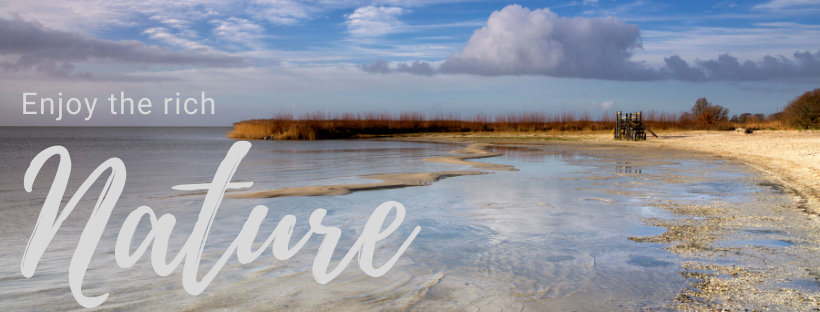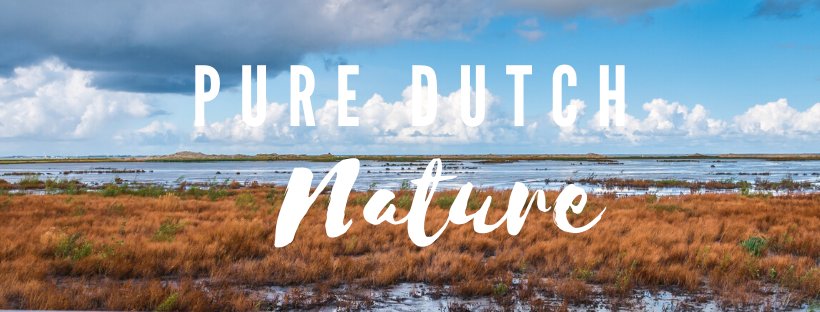The Markermeer is one of the most beautiful sailing spots in the Netherlands.
The Netherlands is known all over the world for its water management. This is not only because the Dutch are able to protect their small country with dikes and the typically Dutch dunes from the wild North Sea. It is also because 30% of the inland sea has been converted into fertile farmland of 160,000 hectares.
The construction of the Houtribdijk also created the Markermeer. An artificial lake, once intended to be reclaimed but now an impressive recreational, sailing and nature reserve.
Famine causes the need to partial drain the IJsselmeer
The Markermeer was part of Lely’s Zuiderzee works, but was only created in 1976 by the construction of the Houtribdijk. The intention was topolder and reclaim this south-western part of the IJsselmeer, under the name ‘Markerwaard’.
Successfully reclaimed polders were already the Flevopolder, the Noordoostpolder and Wieringermeer Polder. These almost literally paid off. Crops were cultivated on them and considerable numbers of cattle were able to graze on them. In this way, a solution was offered to the famine in the Netherlands after the First World War.


After the famine, the drained polders turned out to be very fertile soil for flower cultivation. Something the Netherlands was known for since the Golden Age.
The Markermeer should have become a polder
A number of polders had already been successfully constructed, but the last polder, the Markerwaard, never came. This was despite the many prestigious plans for this polder. For example, there were ideas for a second national airport and a military training area.
But the biggest idea of the visionary Engineer Lely, who was responsible for the Afsluitdijk, was to make the drained polders the center of the Netherlands. This with Lelystad, in the midst of all newly constructed agricultural land, as the center of the country.
In the 1970s, people increasingly realized that the construction of polders had a huge impact on the nature and recreational areas of the Netherlands, which was not always positive. A new problem was also added.
The number of discharges of heavy metals in natural areas such as the Dollard in Groningen continued to increase. And then there was the heavily polluted Rhine water that found its way into the special Wadden Sea area. The flora and fauna have deteriorated as a result of this pollution.

When you went fishing in the 1970s, you pulled sick animals out of the water and seal mortality reached a peak. This, in combination with other factors, triggered a wave of awareness. They wanted to get rid of pollution and the destruction of nature.
Protests stopped the construction of Markerwaard
The construction of the Markerwaard was planned for the entire 20th century. The beginning was realized in 1941. The doubts about the desirability and feasibility of the future Markerwaard had increased so much in the early 1980s that the Lubbers II cabinet decided in 1986 not to proceed with the construction of this last polder for the time being.
The fact that the Zuiderzee works, which also included the construction of the Markerwaard, met with much protest was not new. After all, the fishermen around the IJsselmeer had previously rebelled en masse when the Afsluitdijk was constructed. Many were forced to move to the Zaan region.
It took until the 2006 spatial planning memorandum before it was finally decided not to build the Markerwaard.
The Markermeer is in bad shape in early 2000
In the meantime, the Markermeer had been closed off from the IJsselmeer for three decades due to the construction of the Houtribdijk. But this had major consequences for the underwater landscape and environment.
Door de aanleg van dammen, dijken en ontginning heeft het Markermeer nauwelijks natuurlijke oevers en was deze niet langer verbonden met een rivier of zee. Door de golfslag in het meer kwam voortdurend een grote hoeveelheid slib vrij.
This used to be carried off by flow to deeper parts of the IJsselmeer. But now the silt remained as a blanket on the bottom of the Markermeer with major consequences for the fish and animals under and above water.
The relief for the preservation of the Markermeer was enormous, but the need to restore this nature reserve became painfully clear.
The future of the Markermeer and the Marker Wadden
The Markermeer can stay! But what does the future of this nature reserve look like?
Fortunately, strict laws and regulations have ensured that nature can recover in many places. The new question was how do you ensure that the Markermeer can once again become a healthy nature reserve.
This was discussed for years: the Houtribdijk out, a bridge in it, protests over and over again, huge amounts in intended budgets etc. ensured that it took a long time before the construction of the Marker Wadden started in 2016.
The Marker Wadden
The Marker Wadden is a unique nature area under development. Various natural islands will be constructed using sand, clay and silt from the Markermeer. This large project contributes in many ways to the restoration of the nature of the Markermeer.
On this new group of islands with natural banks, new nature will develop both above and under water. It has become a natural paradise for fish and birds. These recreational islands are the ideal place for your slow travel holiday.

Since the beginning of construction, quite a few positive changes have been seen and birds and animals have been spotted, which had disappeared from this area for decades.
Sailing trips on the Marker Wadden
Visiting the Marker Wadden is certainly worthwhile, despite the fact that the project is not quite finished yet. Many national and international nature lovers choose to go sailing onthe IJsselmeer and the Markermeer for one or more days.
Most choose to sail on an antique sailing ship during a summer holiday in the Netherlands. For example, you can moor at various impressive harbour towns around the Markermeer such as Hoorn andVolendam. But what they really care about is usually the Marken peninsula and of course the Marker Wadden. If you want to book or more information, please contact us here.

